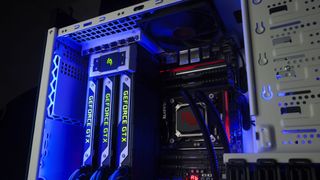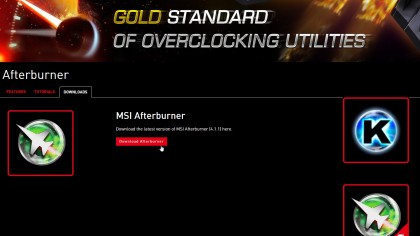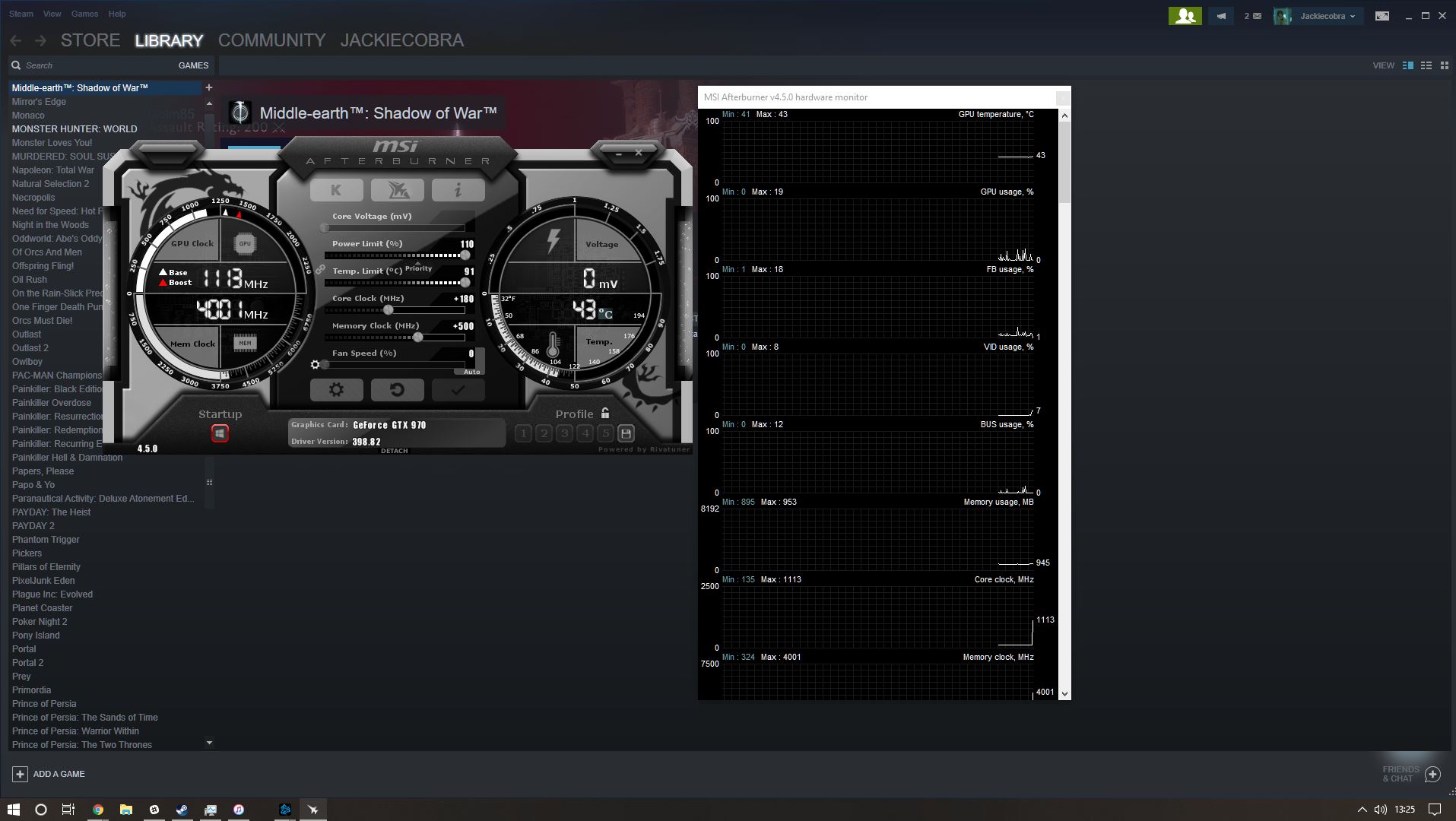How to Overclock Your Gpu Easy 2018
How to overclock your GPU
Get improve graphics operation for free

Welcome to the world of overclocking, a identify where dreams are realized and where having just enough of those overclocking chops may hateful the difference between a world record-breaking benchmark or some time crying into a pile of burnt-out processors and GPUs.
Overclocking the all-time graphics card isn't for the faint of center. If you rush through it, and don't care for your GPU with the respect it deserves, you tin can do some major damage to your hardware.
However, if you're interested in pushing your hardware to its limits, in order to get the absolute well-nigh bang for your buck, this is a great hobby to have.
With both DirectX 11 and DirectX 12, the GPU is the about important component for sheer performance, so overclocking your graphics card is something that could really benefit you if you're a gamer.
Times have changed since the days of just pushing a push in Nvidia GPU Boost (opens in new tab) or AMD Ability Tune (opens in new tab), but you can still radically increase your card's clock speed past using some third-party software.
That beingness said, if yous're non comfortable adjusting sliders picayune by little, and then benchmarking and and then doing it all once again, you lot may exist improve served past letting the proprietary software do its own affair. Modern GPUs will overclock themselves when they sense they have the thermal headroom to do then.
So, if this all sounds highly-seasoned, sit dorsum, relax and nosotros'll bear witness you exactly how far you lot tin can push a graphics bill of fare in 2018.
- Neb Thomas has also contributed to this commodity
- Keep your overclocked rig cool with our guide on how to water absurd your PC

1. Get the software
Unlike CPU overclocking, where y'all have to dabble with your BIOS and do actual math, all you need to overclock your graphics card is some proprietary software. We'd commonly advise going with MSI Afterburner or EVGA Precision, but most aftermarket GPU manufacturers have their own software.
In this case we're overclocking an MSI Twin Frozr GTX 970, and then we're using MSI Afterburner (opens in new tab). It provides frame monitoring for benchmarking and an in-game overlay to monitor how the cards are performing compared to their stock speeds.

2. Enable monitoring
In one case Afterburner is installed, the beginning thing we want to practise is enable in-game overlay, and frame rate monitoring, followed by (for us, at to the lowest degree) changing the peel to something a fiddling more workable.
3. Test stock speeds
Next, you'll desire to get a articulate understanding of how your card performs at stock speeds. We're using Heart Earth: Shadow of War's benchmarking tool at max settings and one,920 x one,080 resolution. Nosotros accomplished an average of 51 frames per second (fps), with a 1% low of 22 fps and 1% high of 146 fps.
4. Increase the ability limit
We now need to go into the overclocking side of things. Head back to desktop and open up up MSI Afterburner again. The beginning thing nosotros're going to increase is the ability limit.
Move the slider to equally high as it volition get. This should let your menu to employ absolutely every inch of power we can get, beyond Nvidia's recommended stock settings, meaning the card can run all the way up to 91 degrees Celsius, as opposed to the stock 79°C.
5. Upward the clock speed
You should get-go past increasing your GPU clock speed. Y'all could just research what other people are reaching and try to copy them. But, we actually advise starting low then gradually pushing your clock college until you first seeing a crash. On our GTX 970 (which is a bit old, mind you), we were able to reach a healthy 180MHz offset, for a total clock of 1,508MHz.
6. Now, the memory clock speed
Finally, y'all're going to want to increase your memory clock speed. The same rule of pollex applies to the memory clock every bit the core clock: first low, gradually build your way upwards. We started with a modest 200MHz offset to the VRAM, and were able to push it to 500MHz stable.
Merely, delight, don't take our results and just assume it'll work for your GTX 970. You should examination every small incremental change you brand, to avert dissentious your hardware.
Anyway, after y'all figure out how much of memory overclock you need, just hit that checkmark and jump into a game to encounter how it performs.

With all of our overclocks applied in Heart Earth: Shadow of State of war, we were able to get to an average frame rate of 57 fps, a minimum of 22 fps and a max of 169 fps at FHD resolution with the settings maxed out. That's essentially 1080p 60 fps on a very demanding modern AAA game – we got more than than a 10% increase in performance for complimentary.
Even the departure between the minimum and boilerplate is lower than the stock version. Who tin fence with costless performance? How did it work for you? Hit us up on Twitter and tell us your overclocking stories, both good and bad.
- Learn how to overclock your CPU
reyesarinalwas1948.blogspot.com
Source: https://www.techradar.com/uk/how-to/computing/how-to-overclock-your-gpu-1306627
0 Response to "How to Overclock Your Gpu Easy 2018"
Post a Comment